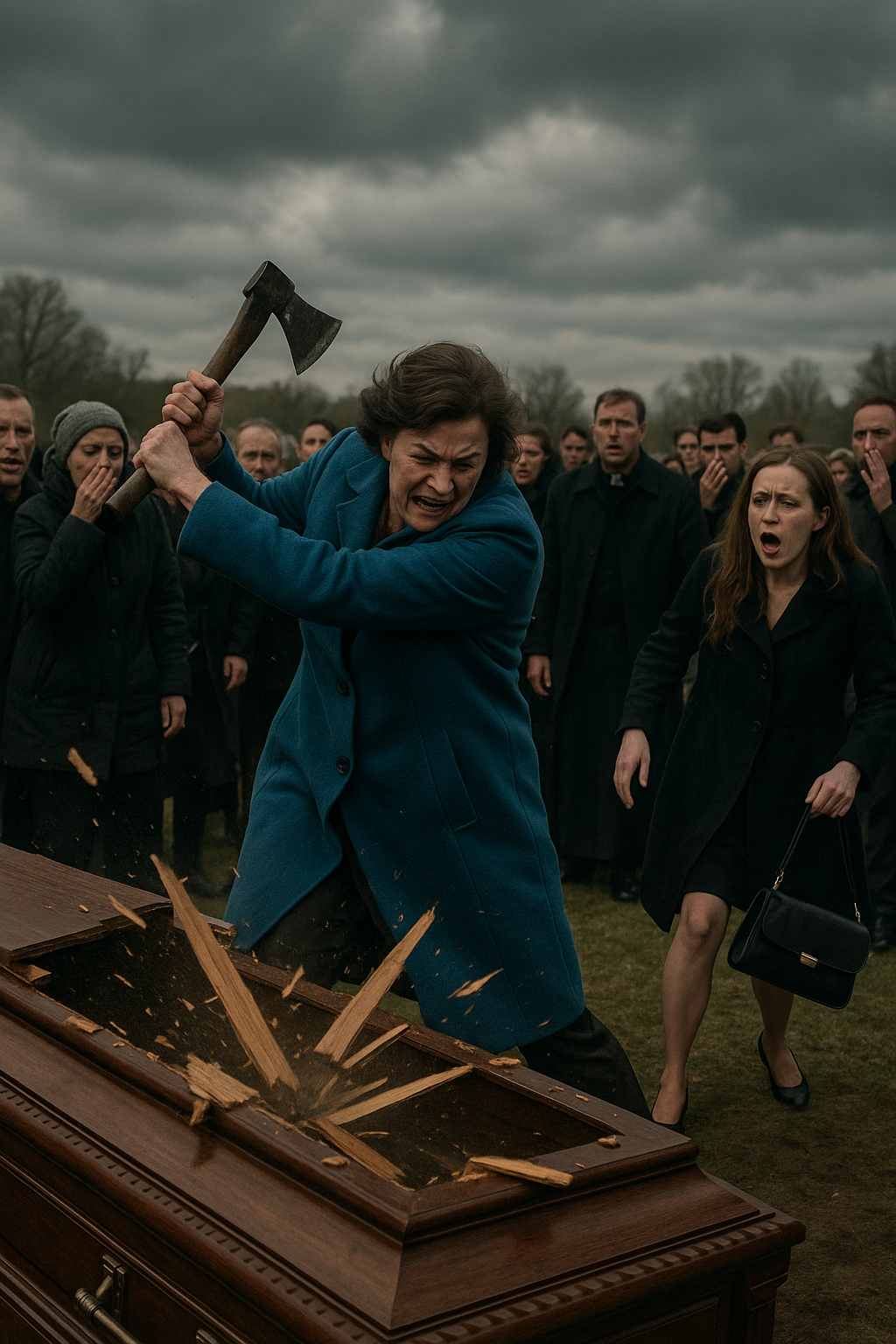The Mother Who Refused to Believe
“I’m not going to that funeral. That is not my son.”
“Mom… what are you talking about? This is your son’s—my husband’s—funeral. How can you say that?”
“You don’t understand. My son is not in that coffin. They’re hiding something from us.”
“But you saw the documents. They explained his face was badly injured in the accident, but the DNA test confirmed it was him.”
The mother’s voice didn’t waver. “No. That’s not my son. I can feel it.”
“You’re just grieving. You don’t want to accept he’s gone.”
“My son is alive. Stop talking about him as if he isn’t.”
No matter how many times they tried to reason with her, she stood firm. But hours later, she finally agreed to attend. She refused to wear black, choosing instead a blue coat. In her hand was a thick black bag she never let go of. The daughter-in-law stayed silent—the important thing was, the mother-in-law would be there.
The Moment Everything Stopped
The sky was heavy that day, clouds pressing low over the cemetery.
As the service began and the coffin was being sealed, the mother stepped forward, pale-faced. She set her bag down, reached in, and pulled out an axe.
Before anyone could react, she raised it high and brought it down with all her strength. A loud crack split the air. One strike, then another—the lid gave way, wooden boards breaking apart.
For a moment, the world went silent. People froze. Some covered their mouths; others stepped back. The priest lowered his gaze. Then a voice broke the stillness:
“It’s… empty!”
The Secret Starts to Unravel
Chaos followed. Men ran to the gravediggers, demanding answers. Someone called the police. The daughter-in-law’s purse fell from her hand as her face drained of color.
The mother stood over the broken coffin, gripping the axe so tightly her knuckles turned white.
“I told you,” she said quietly but firmly. “My son is not here.”
A thin man in a cemetery guard’s uniform stepped forward. He hesitated, then spoke:
“The… the b0dy was taken. Last night. Two people came with documents and said it was being moved to another city’s morgue for a re-examination. I… I didn’t realize it was like this.”
The air grew colder. Where had they taken him? And who were these people?
Pieces of the Puzzle
The police arrived quickly, questioning everyone. But the morgue’s records showed no sign of any transfer.
Instead of the son’s name, the entry read: “Removed—clerical error.”
Two days later, a clue appeared. Security footage from a gas station outside the city showed a black van arriving at 3:17 a.m., just hours before the funeral. Two men in plain clothes were seen unloading a covered stretcher, staying only five minutes before driving toward the highway.
The license plate led to a rental company with no record of the vehicle being returned. Near the gas station, officers found a hospital bracelet in the trash—printed with her son’s name and a date one day after his supposed death.
The Final Message
That night, the mother sat alone in her kitchen, the bracelet on the table. Her phone buzzed—an unknown number.
She answered.
There was a pause, then a voice she knew better than her own:
“Mom… it’s me. I can’t explain everything now. I saw something I wasn’t supposed to. They think I’m gone, and it has to stay that way—for your safety. Please… don’t look for me.”
The line went dead.
Her hands trembled, but her eyes burned with resolve. She slipped the bracelet into her coat pocket, grabbed her bag, and stepped outside into the cold night.
If they thought she would stop here, they were wrong. Very wrong.
